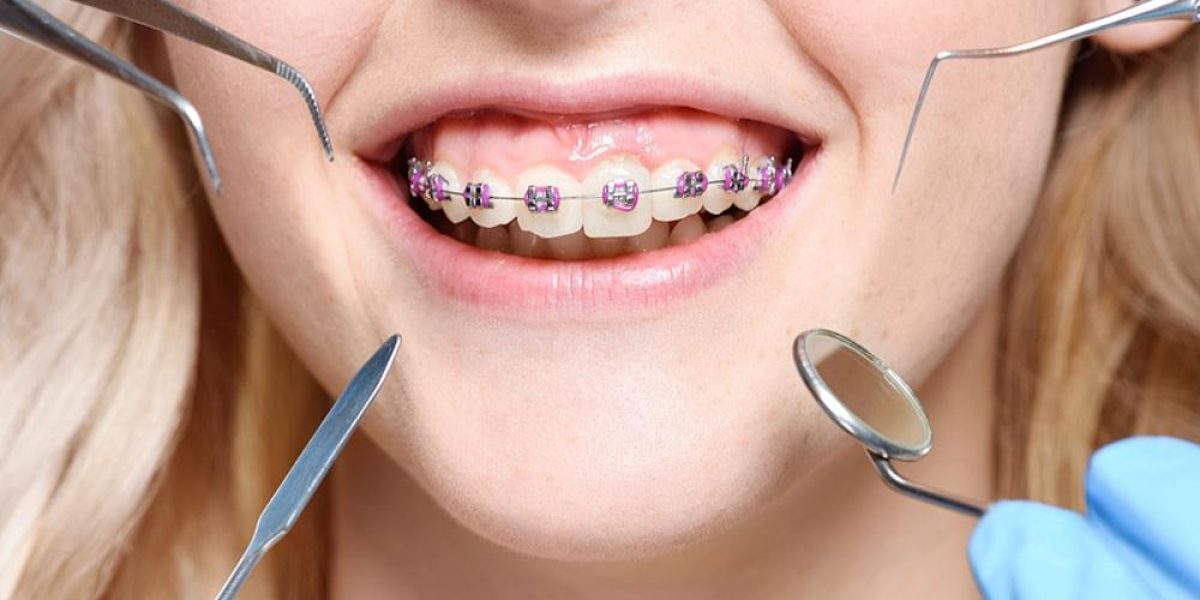When you see someone with braces or clear aligners, it may seem like their teeth are just being pushed into place—but the reality is far more complex. Moving teeth involves precise biological responses and mechanical forces that require expert planning and monitoring. Orthodontists in Dubai are highly trained specialists who apply this knowledge to correct misalignments safely and efficiently. Understanding the science behind tooth movement can help patients appreciate the complexity and effectiveness of modern orthodontics.
The Role of the Periodontal Ligament:
At the core of tooth movement is the periodontal ligament, a thin layer of connective tissue that surrounds each tooth and connects it to the bone. This ligament acts like a shock absorber, allowing for slight movement and flexibility. When consistent force is applied to a tooth, the ligament stretches on one side and compresses on the other, triggering a biological response that leads to bone remodeling.
Bone Remodeling Explained:
Orthodontic tooth movement relies on a process known as bone remodeling, where bone is broken down on one side of the tooth and rebuilt on the other. The compressed side of the periodontal ligament signals bone cells called osteoclasts to break down bone, while the stretched side encourages osteoblasts to build new bone. This continuous process allows the tooth to shift while maintaining a stable position within the jaw.
Types of Forces Used in Orthodontics:
Orthodontists use controlled mechanical forces to guide teeth into better positions. These forces can be applied through brackets and wires, clear aligners, elastics, springs, or other devices. The force must be just right—too weak and it won’t move the teeth, too strong and it could damage the ligament or bone. Orthodontists carefully calculate and adjust these forces to ensure safe, steady progress throughout treatment.
The Importance of Tooth Movement Timing:
Tooth movement is a gradual process, and timing plays a critical role in treatment success. Biological systems respond better to light, sustained forces over time rather than sudden or heavy pressures. That’s why braces are adjusted every few weeks and aligners are changed every one to two weeks. The pace allows bone remodeling to keep up with tooth movement, reducing risks and improving long-term results.
How Braces Work Mechanically:
Braces consist of brackets bonded to each tooth and connected by a flexible archwire. The wire is shaped to reflect the desired final position of the teeth. As it tries to return to its original shape, it applies pressure to the teeth, guiding them gradually into alignment. Additional components like springs and elastics help correct more complex movements, such as rotating teeth or shifting the jaw.
The Science Behind Clear Aligners:
Clear aligners, such as Invisalign, use a series of custom-molded trays to move teeth incrementally. Each aligner is slightly different from the last, and when worn consistently, they exert gentle pressure on the teeth to encourage movement. Aligners are planned using digital simulations, allowing orthodontists to visualize and control each phase of treatment with precision. While they may seem simple, aligners harness the same principles of bone remodeling and tissue response as braces.
Biological Factors That Affect Movement:
Not all patients respond to orthodontic forces in the same way. Age, bone density, genetics, and overall oral health all influence the rate and stability of tooth movement. Younger patients often experience faster results because their bones are still growing and more adaptable. Orthodontists evaluate these factors before creating a treatment plan to optimize efficiency and minimize complications.
The Role of Retainers in Stabilizing Results:
Once teeth are moved into their ideal positions, the bone and surrounding tissues need time to stabilize. Retainers play a critical role in holding teeth in place while the bone reforms around the new position. Without retention, teeth have a natural tendency to drift back to their original alignment. Orthodontists design custom retention strategies to ensure long-lasting outcomes based on each patient’s biology and treatment history.
Monitoring and Adjusting Treatment:
Tooth movement is not a one-size-fits-all process, which is why regular monitoring is essential. Orthodontists track progress at scheduled intervals, adjusting appliances and treatment plans as needed. These checkups ensure that teeth are moving as intended, identify any potential problems early, and maintain a healthy balance between force and tissue response.
Advanced Technology Enhancing Precision:
Modern orthodontics relies heavily on digital tools to improve accuracy and predictability. 3D imaging, intraoral scanners, and computer-aided design software help orthodontists plan every detail of the tooth movement process. In some clinics, artificial intelligence and machine learning further refine treatment by analyzing vast datasets of past cases. This integration of science and technology enhances both outcomes and patient experience.
Final Thoughts:
Tooth movement is not magic—it’s the result of a finely tuned biological and mechanical process guided by specialized expertise. Orthodontists in Dubai apply scientific principles, digital innovations, and individualized care strategies to ensure safe and effective alignment. Whether using braces, aligners, or other tools, their work is rooted in a deep understanding of how the body responds to consistent, calculated forces. By demystifying the process, patients can better appreciate their treatment and stay motivated throughout their orthodontic journey.












